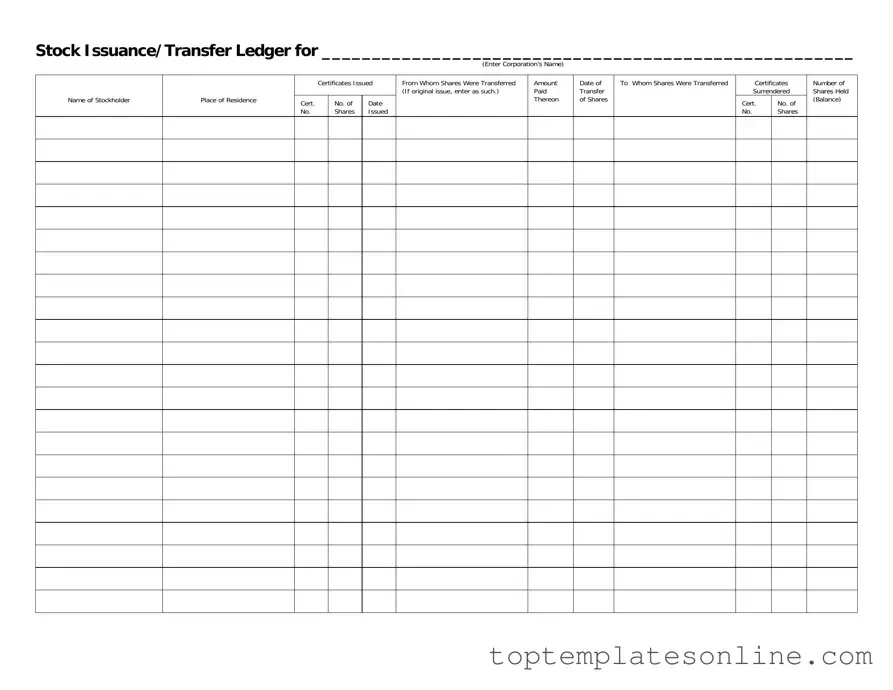Fillable Stock Transfer Ledger Form
The Stock Transfer Ledger form serves as a vital record for corporations, documenting the issuance and transfer of shares among stockholders. This form captures essential details, including the names of stockholders, certificates issued, and the dates of transactions. Maintaining an accurate ledger is crucial for ensuring transparency and compliance within the corporate structure.
Customize Stock Transfer Ledger Here
